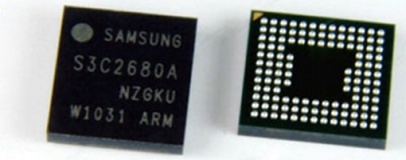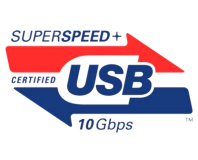Wireless USB is the technology that just never seems to catch a break. Offering all the plug-and-play advantages of USB with no wires to get in the way, it's been a finished specification since 2005 but is most likely nowhere to be seen in your rig. Samsung, however, is looking to change all that with an ultra-low-power implementation in its upcoming consumer products.
According to an announcement made by the company late last week, the ultra-wide band wireless system uses a pair of chips to send full-speed USB 2 across the aether at an impressive 480Mb/sec, hopefully paving the way for portable devices that can be quickly synchronised with a master PC without the need for annoying cables.
The rather catchily named S3C2680/S5M8311 WUSB system provides static and portable devices with the ability to beam "high-definition content [...] to a tethered device for viewing," providing the first hint of Samsung's plans for the technology. "Initial applications are high-resolution cameras, camcorders, TVs and PCs with prospects for adoption in other applications including tablet PCs, printers, beam projectors, portable HDDs, Blu-ray players, and mobile handsets."
The major barrier to adoption, however, is power: whereas wired USB provides devices with both a data connection and a reasonable amount of power, wireless USB needs a separate power source. Although devices such as smartphones and cameras have built-in batteries, it's nice to be able to top up the charge while you're transferring data, which wireless USB can't yet offer.
At least the power won't be drained too much by Samsung's latest chips: the company claims that even when transferring data at the maximum 480Mb/sec speed of the USB 2 specification, its wireless implementation draws a mere 300mW thanks to a "65nm low power logic process technology." Even more power is saved thanks to the company's decision to integrate a NAND flash controller into the chipset, avoiding the need to have a separate controller chip in your smartphone or camera.
The company is sampling small quantities of the chips to "select customers" now, but won't be ready for mass production until the end of the year.
Are you pleased to see that the promise of wireless USB hasn't completely disappeared, or will the technology always stagnate as long as it can't transfer 5V@500mA wirelessly? Share your thoughts over in the forums.
According to an announcement made by the company late last week, the ultra-wide band wireless system uses a pair of chips to send full-speed USB 2 across the aether at an impressive 480Mb/sec, hopefully paving the way for portable devices that can be quickly synchronised with a master PC without the need for annoying cables.
The rather catchily named S3C2680/S5M8311 WUSB system provides static and portable devices with the ability to beam "high-definition content [...] to a tethered device for viewing," providing the first hint of Samsung's plans for the technology. "Initial applications are high-resolution cameras, camcorders, TVs and PCs with prospects for adoption in other applications including tablet PCs, printers, beam projectors, portable HDDs, Blu-ray players, and mobile handsets."
The major barrier to adoption, however, is power: whereas wired USB provides devices with both a data connection and a reasonable amount of power, wireless USB needs a separate power source. Although devices such as smartphones and cameras have built-in batteries, it's nice to be able to top up the charge while you're transferring data, which wireless USB can't yet offer.
At least the power won't be drained too much by Samsung's latest chips: the company claims that even when transferring data at the maximum 480Mb/sec speed of the USB 2 specification, its wireless implementation draws a mere 300mW thanks to a "65nm low power logic process technology." Even more power is saved thanks to the company's decision to integrate a NAND flash controller into the chipset, avoiding the need to have a separate controller chip in your smartphone or camera.
The company is sampling small quantities of the chips to "select customers" now, but won't be ready for mass production until the end of the year.
Are you pleased to see that the promise of wireless USB hasn't completely disappeared, or will the technology always stagnate as long as it can't transfer 5V@500mA wirelessly? Share your thoughts over in the forums.

MSI MPG Velox 100R Chassis Review
October 14 2021 | 15:04









Want to comment? Please log in.